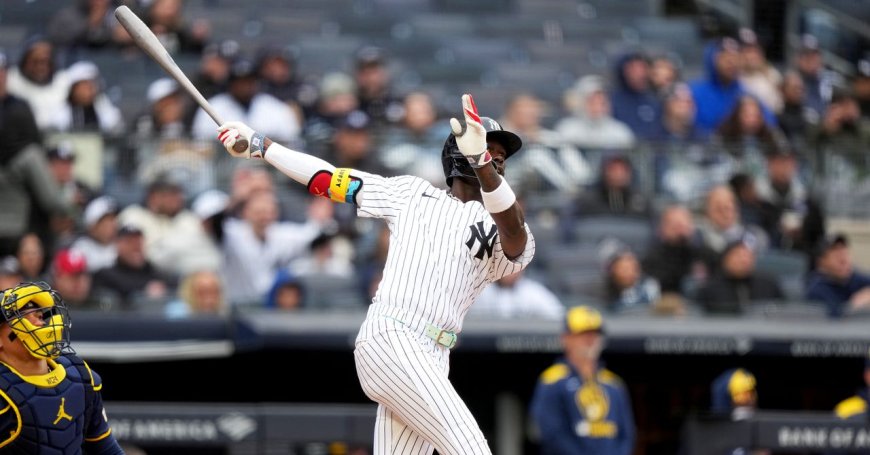Torpedo Bats and the Physics of the Sweet Spot

In any sport, having the best gear can make all the difference. Swimmers want a suit with the minimum possible drag. Specialized running shoes trim off seconds in track and field events. Super grippy gloves in football created a whole genre of circus catches.
Well, in baseball we have the bat. This season, the New York Yankees have begun to use a new design called the torpedo bat because it supposedly resembles a torpedo (though I doubt it works underwater). I’d say it looks more like an elongated bowling pin, but that doesn’t sound as cool.
Anyway, in the first three games of the season, the Yanks hit 15 home runs, nine of which came off torpedo bats. That pace slowed a bit in the last two games, but they’re still breaking records.
Is that a coincidence, or is this legit? Well, did I mention that the bat was designed by a former physics professor? ’Nuff said.
So what’s the difference? It’s all about the distribution of mass. Traditional bats get thicker as you move away from the handle, but the torpedo bat is thicker in the middle than at the top. This does a few things. It puts more mass in the spot where many hitters actually make contact. Also, with less weight at the end, it’s possible to swing faster. And it can be customized to create the perfect sweet spot for each player.
But what the heck is a sweet spot? Ah, that's where the physics fun comes in.
The Basic Collision of Ball and Stick
In physics, we like to use idealized situations to get a handle on how things work. So let’s start with a plain stick with uniform thickness. To make it easy, suppose the stick is lying flat on a frozen lake (i.e., no friction). Then a baseball comes sliding toward the stick and hits it right in the middle.
What's Your Reaction?
 Like
0
Like
0
 Dislike
0
Dislike
0
 Love
0
Love
0
 Funny
0
Funny
0
 Angry
0
Angry
0
 Sad
0
Sad
0
 Wow
0
Wow
0



















































